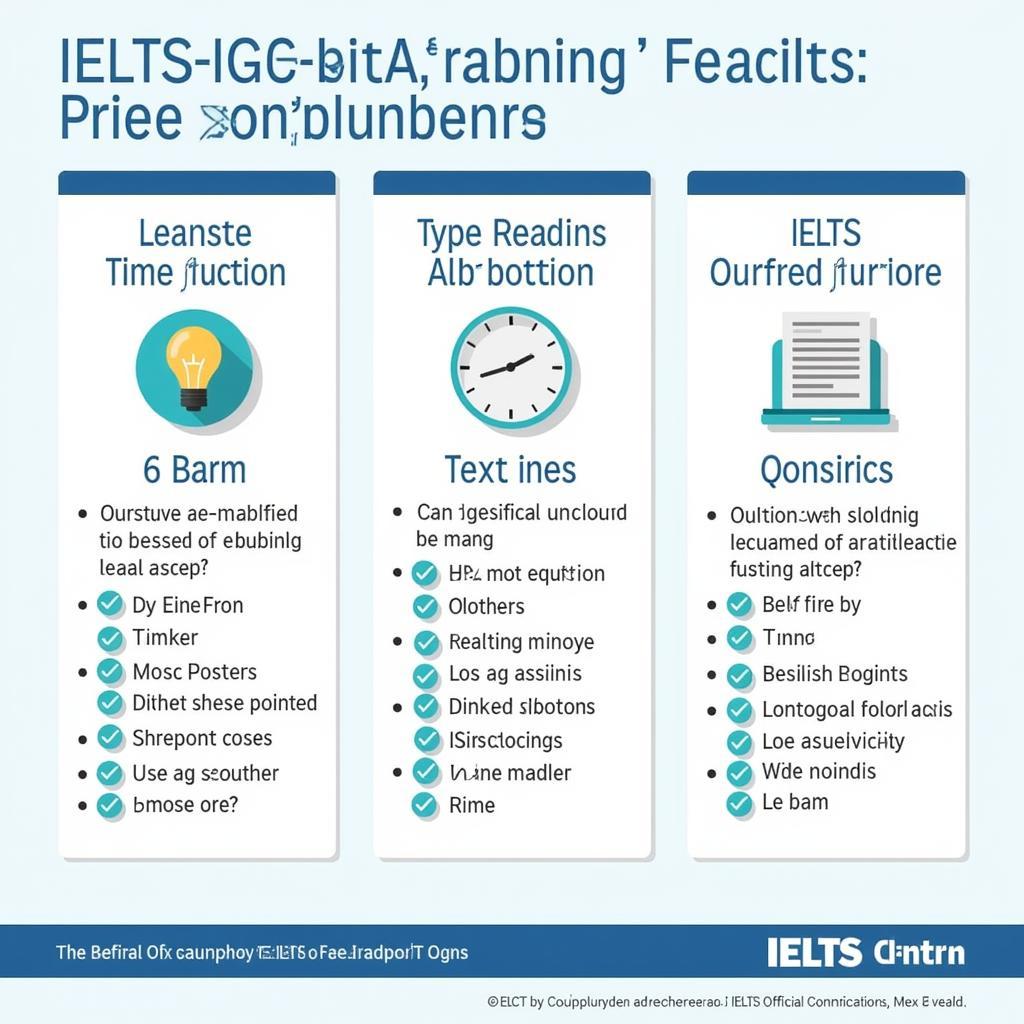The IELTS General Training Reading section presents unique challenges that require specific strategies for success. As an experienced IELTS instructor, I’ll share proven techniques that have helped countless students achieve their target scores. Understanding these strategies is crucial for handling time pressure in reading effectively.
Understanding the IELTS General Training Reading Format
The General Training Reading test consists of three sections, progressively increasing in difficulty. Each section focuses on different text types that you’ll encounter in everyday English-speaking environments.
Section Breakdown
- Section 1: Everyday contexts (notices, advertisements, timetables)
- Section 2: Work-related materials (job descriptions, contracts, training manuals)
- Section 3: Longer, more complex texts (newspapers, magazines, academic content)

Essential Pre-reading Strategies
Before diving into the passages, implementing effective pre-reading techniques can significantly improve your performance. For detailed guidance on various question types, check out What are the common IELTS reading task types?.
Skimming Techniques
- Read the title and subheadings first
- Focus on the first and last sentences of each paragraph
- Identify the main idea quickly
- Don’t get caught up in details initially
Scanning Methods
- Locate specific information using keywords
- Pay attention to numbers, dates, and proper nouns
- Use your finger or pencil as a guide
- Move your eyes vertically rather than horizontally
Time Management Strategies
Effective time management is crucial for improving speed for reading comprehension. Here’s how to allocate your 60 minutes:
- First 5 minutes: Overview and planning
- 15 minutes per section
- Final 10 minutes: Review and transfer answers
Question-Specific Approaches
Different question types require specific strategies. Understanding how to tackle IELTS Reading true/false/not given questions strategy is particularly important.
Multiple Choice Questions
- Read the question stem carefully
- Predict possible answers before looking at options
- Eliminate obviously incorrect choices
- Watch for distractors using similar vocabulary
Matching Questions
- Create mental categories while reading
- Look for synonyms and paraphrasing
- Match the easiest pairs first
- Double-check remaining options
Advanced Reading Techniques
To get a higher score in IELTS reading, incorporate these advanced strategies:
Vocabulary Management
- Learn common academic word families
- Practice identifying context clues
- Focus on collocations and phrases
- Maintain a vocabulary journal
Understanding Complex Sentences
- Break down long sentences into smaller parts
- Identify main clauses and supporting ideas
- Pay attention to linking words
- Practice parsing complex grammatical structures
Common Pitfalls to Avoid
- Don’t spend too much time on difficult questions
- Avoid translating every word
- Don’t panic if you encounter unknown vocabulary
- Never leave answers blank
Final Tips for Success
- Practice with authentic materials regularly
- Time yourself during practice sessions
- Review incorrect answers to understand patterns
- Develop a consistent reading routine
- Stay calm and focused during the test
Remember, success in IELTS General Training Reading comes from consistent practice and strategic approach. Focus on developing these skills systematically, and you’ll see improvement in your performance and confidence.
Frequently Asked Questions
- How many questions are in the IELTS General Training Reading test?
- There are 40 questions distributed across three sections.
- Is there negative marking in IELTS Reading?
- No, there is no penalty for incorrect answers.
- Can I write on the question paper?
- Yes, you can make notes and mark up the question paper.
- Should I read the passages or questions first?
- It’s generally recommended to quickly preview both, then focus on questions one section at a time.
- How can I improve my reading speed?
- Regular practice with timed readings and developing skimming/scanning techniques are key to improvement.